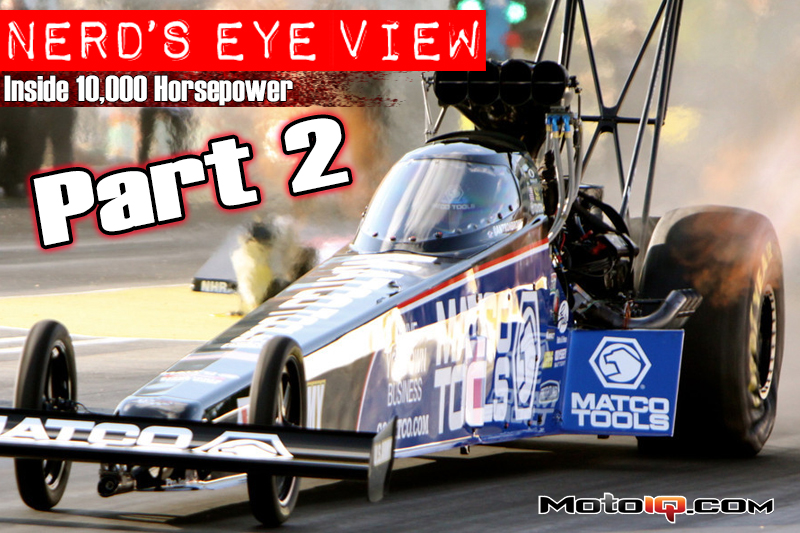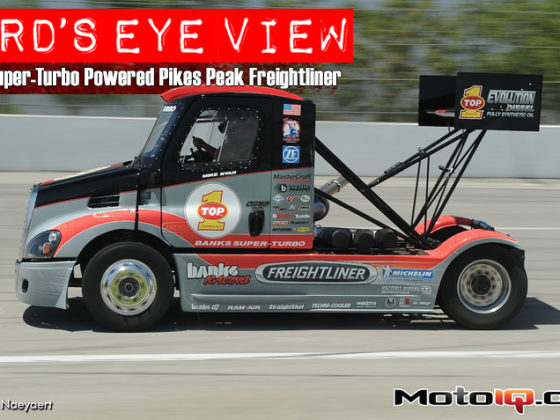,
 |
Nitro cars do not actually have gears, instead they are a direct drive. That's why they sound the way the do with no shifting when they tear down the track. The drivers don't slip the clutch themselves with their left foot down the track, either. Rather, the whole clutch system is electronically controlled with a sophisticated system located beyond the driver's feet. |
This system imitates the travel of the foot off a clutch pedal electronically. It does so by controlling hydraulic fluid passed in the canon to the bell housing. With just .200-in travel for each lever, the car is first locked in gear with six primary levers of the pressure plate. The car launches this way as well.
At about 8/10ths of a second down the strip (or about 100 MPH), an additional twelve secondary—or lock-up—levers start to grab over the next two seconds. And just before the 3-second mark (or about 280 MPH), the driveshaft is finally engaged at a 1:1 ratio with the motor, and at full power to the tires.
 |
Clutch engagement is calculated by the differential between front and rear wheel speed. Pictured here is one of the sensors on the front wheel. |
According to assistant crew chief, Brad Mason, most teams vary the car's horsepower to suit the weather and track conditions to achieve their best times. The Matco Tools Top Fuel team, however, maximizes horsepower first and then fine-tunes the clutch system to suit the conditions.
FACT #13: A Top Fueler makes so much power the clutch is purposely slipped for nearly 75% of the run, only delivering full power to the rear tires for about a second. If not done this way, either the tires would go up in smoke or the clutch itself would be destroyed.
 |
Pictured here is the canon. Its purpose is to control the throw-out bearing to simulate Antron's foot coming off the clutch pedal down the track. That hydraulic line comes from the clutch to the electronic clutch control above. “What we do is control the flow from the canon to the controller,” says Mason. |
 |
This is the pinion to the rear end. The ring gear in the differential is a whopping 12.25-in in diameter with a 3.20:1 ratio. To put it into perspective, the size of a ring gear in a normal car or truck differential is around 7.5-in. |
 |
Back to the logs as we saw in Part 1, here we see the correlation between vehicle speed and engine RPM. Notice how linear the green MPH line is, thanks to the electronically controlled clutch. |



